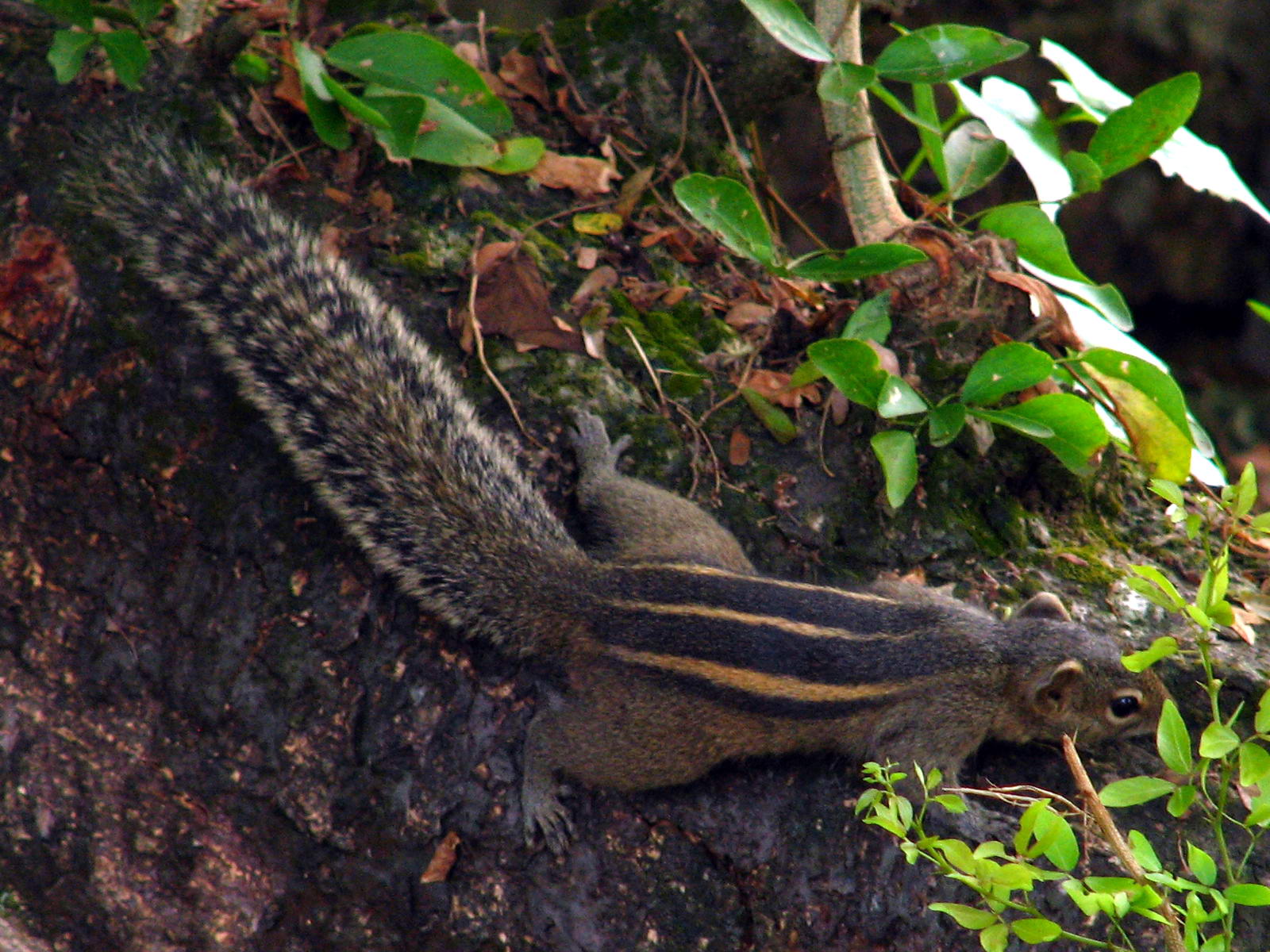- Indian Palm Squirrel
Taxobox
name = Indian Palm Squirrel

status = LR/lc | status_system = IUCN2.3
regnum =Animalia
phylum =Chordata
classis =Mammalia
ordo =Rodent ia
familia =Sciuridae
genus = "Funambulus "
subgenus = "Funambulus"
species = "F. palmarum"
binomial = "Funambulus palmarum"
binomial_authority = (Linnaeus, 1766)
synonyms = The Indian Palm Squirrel ("Funambulus palmarum") also known as Three-Striped Palm Squirrel, is a species ofrodent in theSciuridae family.It is found naturally inIndia andSri Lanka .More recently, the Palm Squirrel has been accidentally introduced into Western Australia, where it has become a minor pest that is actively eradicated due to its lack of natural predators. [Farmnote 113/2000, Government of Western Australia Department and Agriculture and Food, retrieved 8/14/2008 [http://www.agric.wa.gov.au/content/pw/vp/f11300.pdf] ]
Palm squirrels are about the size of rats with a bushy tail which is slightly shorter than their body.Their back is a grizzled grey-brown colour with five conspicuous white stripes, three of which runfrom head to tail. The two outer stripes run from the forelegs to the hind legs only. They have acreamy white belly and a tail covered with interspersed long black and white hairs. Their ears aresmall and triangular.
Life cycle
Gestation period is 34 days. Litter size averages 2.75 (viviparous ). Breeding takes place in grass nests during autumn. Litters of two or three are common. The youngare weaned after about ten weeks and are sexually mature at nine months.Adult weight is 100 g. Little is known about their longevity, but one specimen lived 5.5 years in captivity. [Human Ageing Genomic Resources, AnAge database, retrieved 7/30/2007 [http://www.genomics.senescence.info/species/entry.php?species=Funambulus_palmarum AnAge entry for Funambulus palmarum] ]
Legendary stripes
The stripes on the Palm Squirrels back are explained by a Hindu legend. The legend has it that a squirrel helped in the construction of the Adi sethu (bridge) at
Rameswaram . The bridge was being constructed by Lord Rama and theVanara Sena , and the squirrel played its part by rolling in beach sand then running to the bridge to shake the sand from its back, all the time chanting Lord Rama's name. Lord Rama was pleased by the creature's dedication and, in stroking the squirrel's back, the mark of Rama's fingers was left on the squirrel ever since. [ [http://www.ecoheritage.cpreec.org/scared_animals_squirrel.htm Indian Striped Squirrel ] ]This association with Lord Rama explains why squirrels are considered sacred in India
References
* Baillie, J. 1996. [http://www.iucnredlist.org/search/details.php/8701/all Funambulus palmarum] . [http://www.iucnredlist.org 2006 IUCN Red List of Threatened Species. ] Downloaded on
29 July 2007 .
*Thorington, R. W. Jr. and R. S. Hoffman. 2005. Family Sciuridae. Pp. 754-818 "in" Mammal Species of the World a Taxonomic and Geographic Reference. D. E. Wilson and D. M. Reeder eds. Johns Hopkins University Press, Baltimore.
Wikimedia Foundation. 2010.
